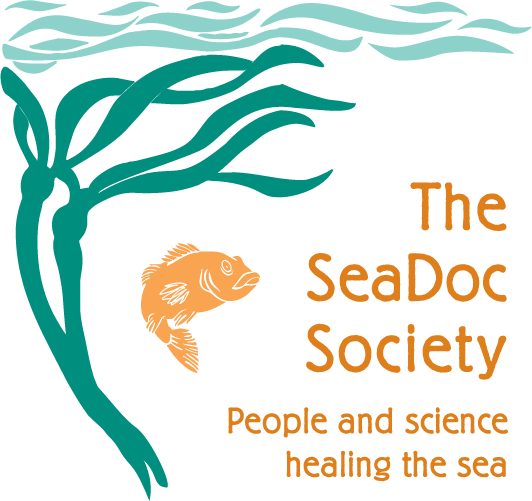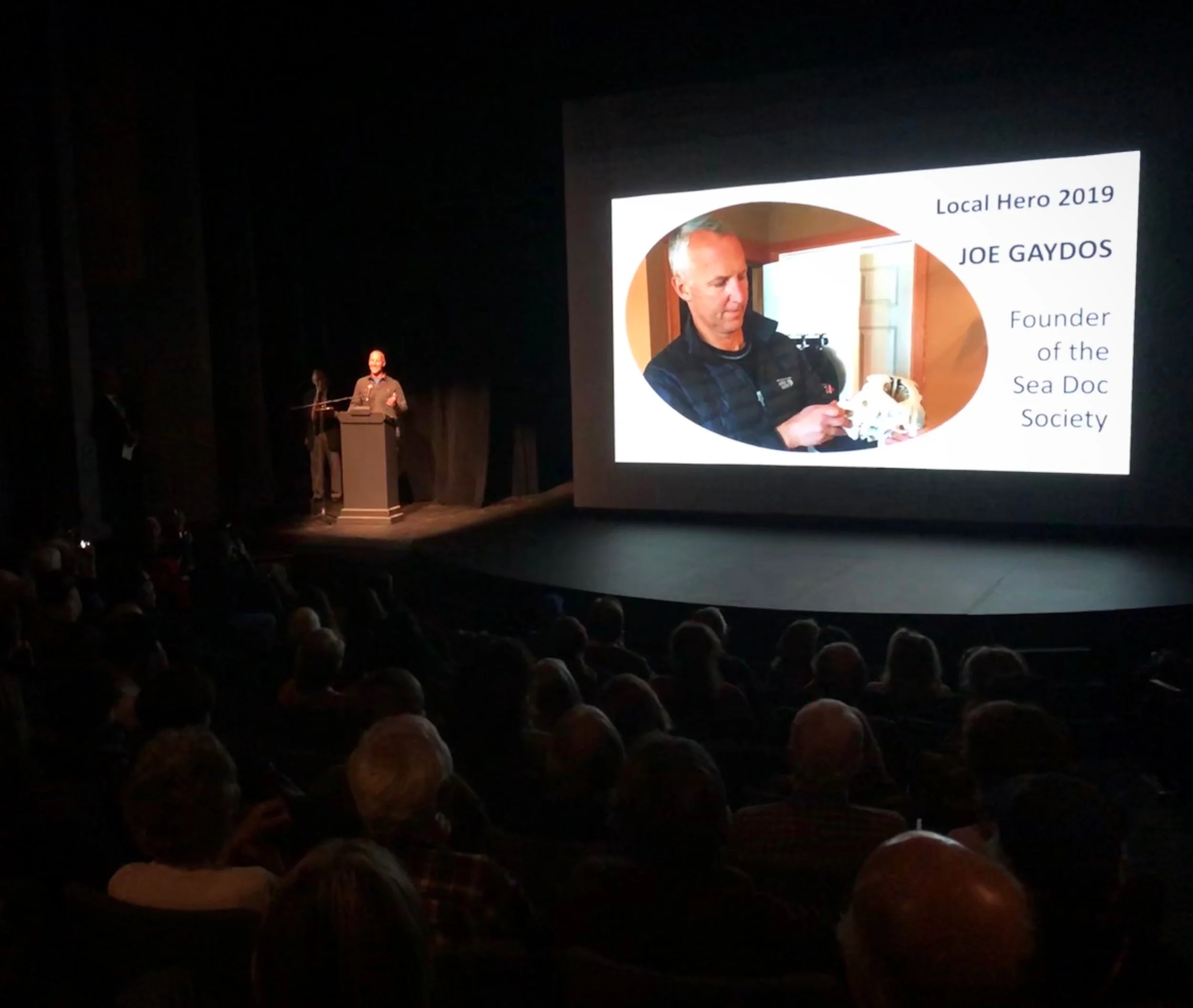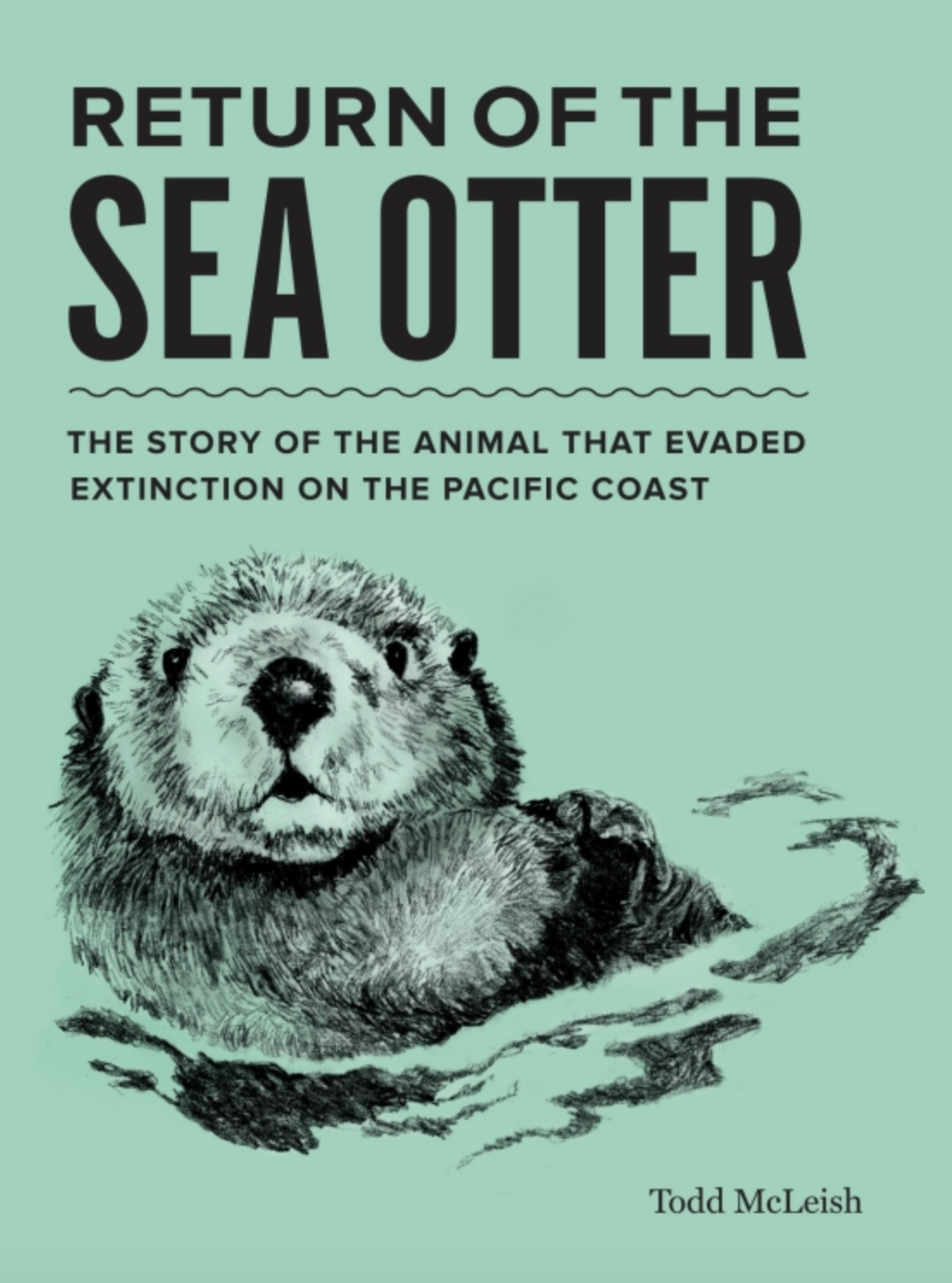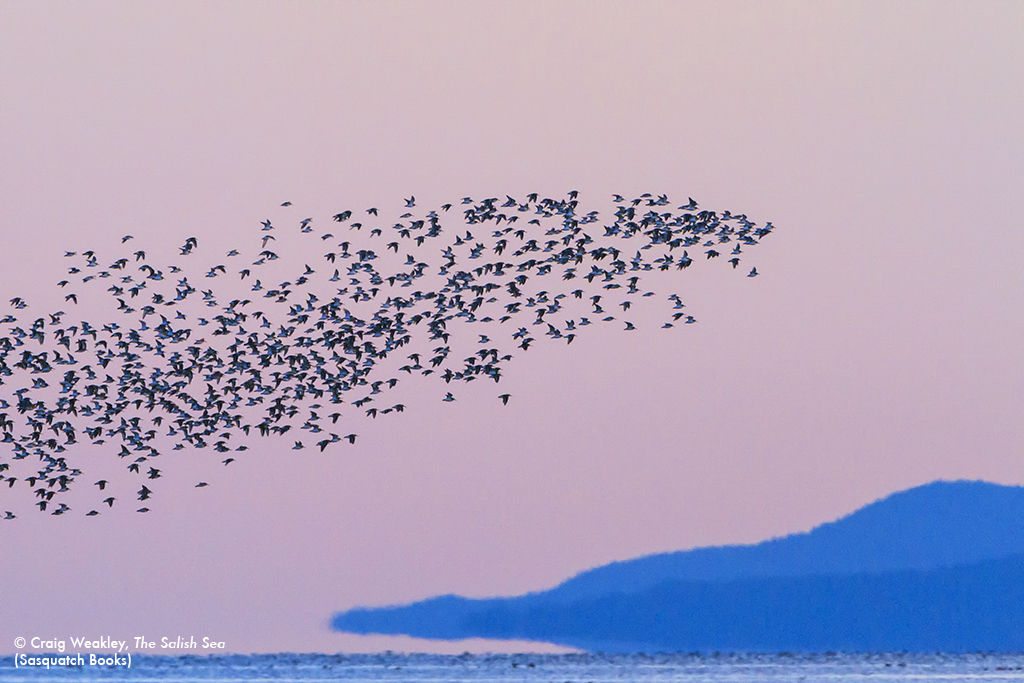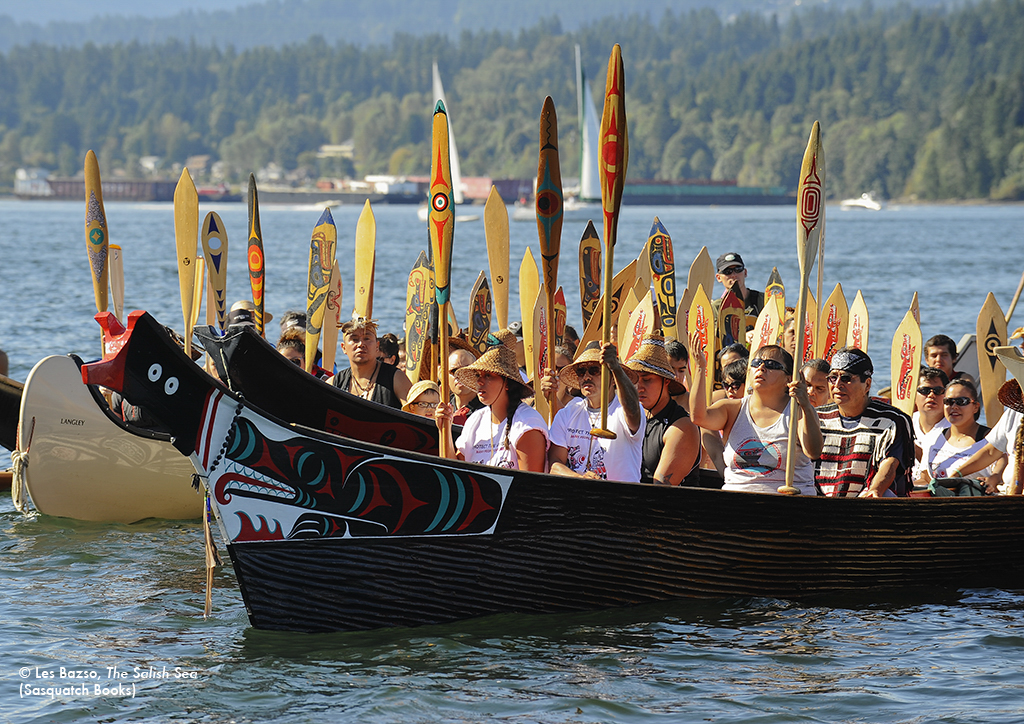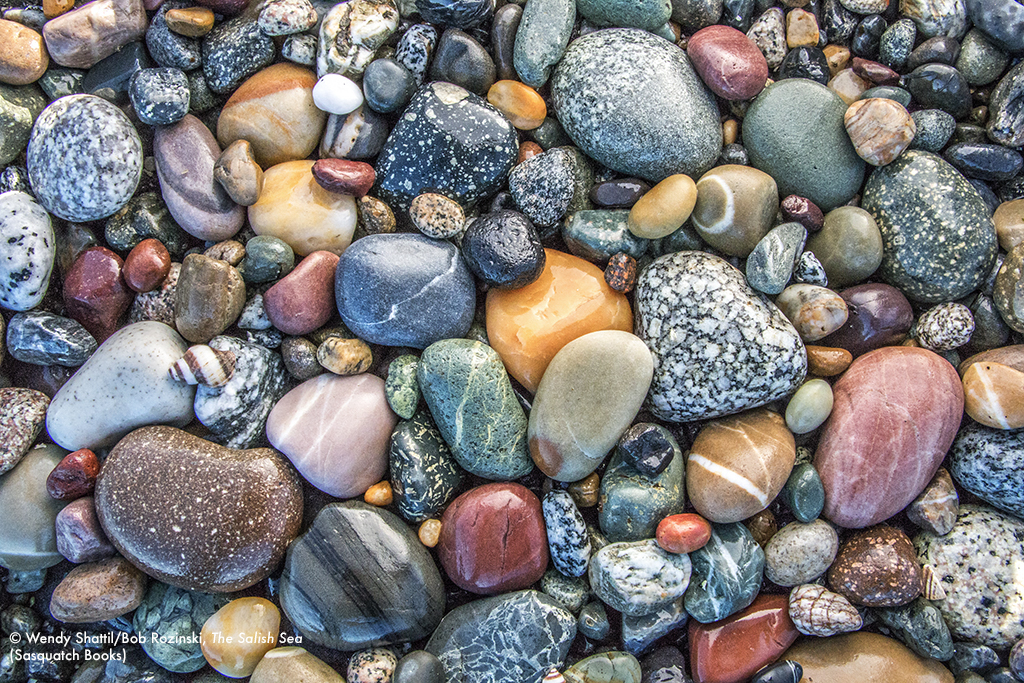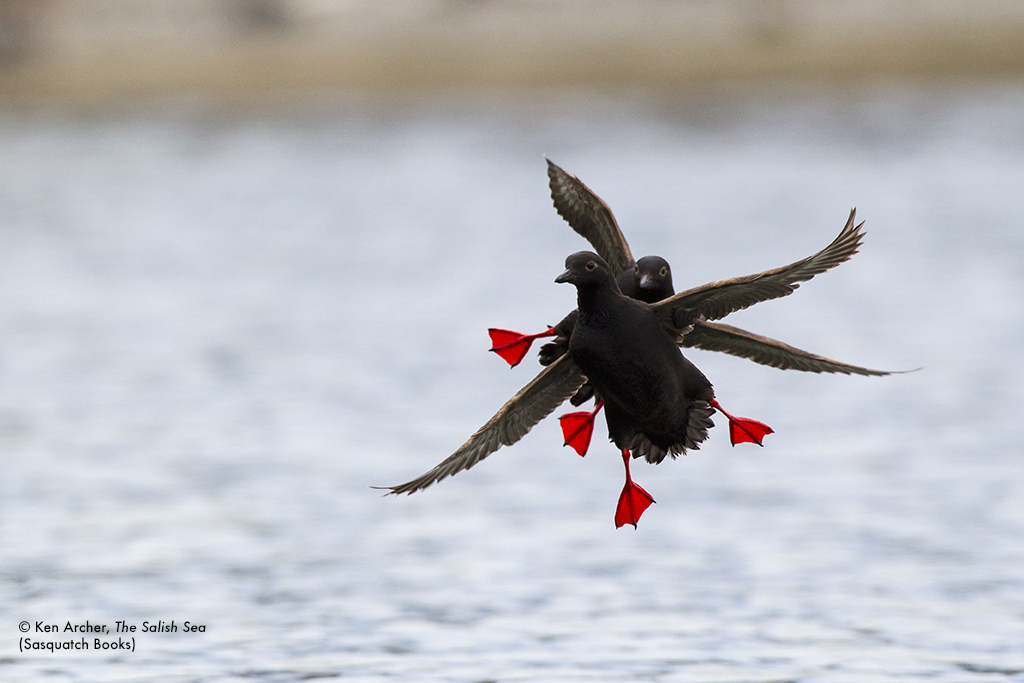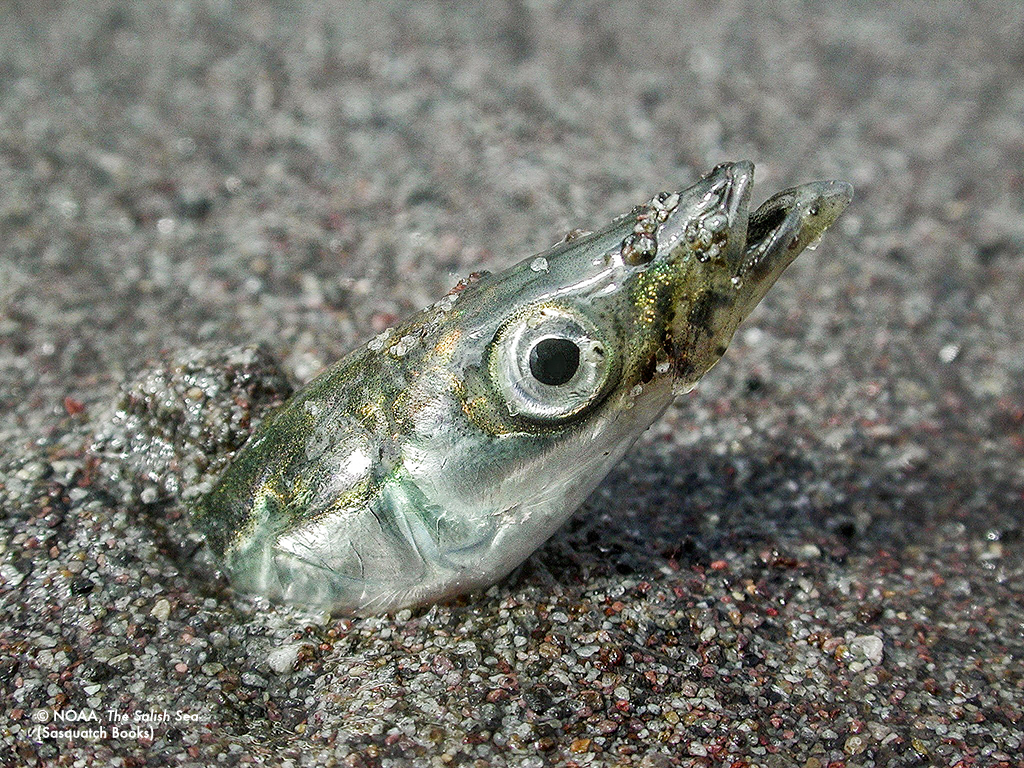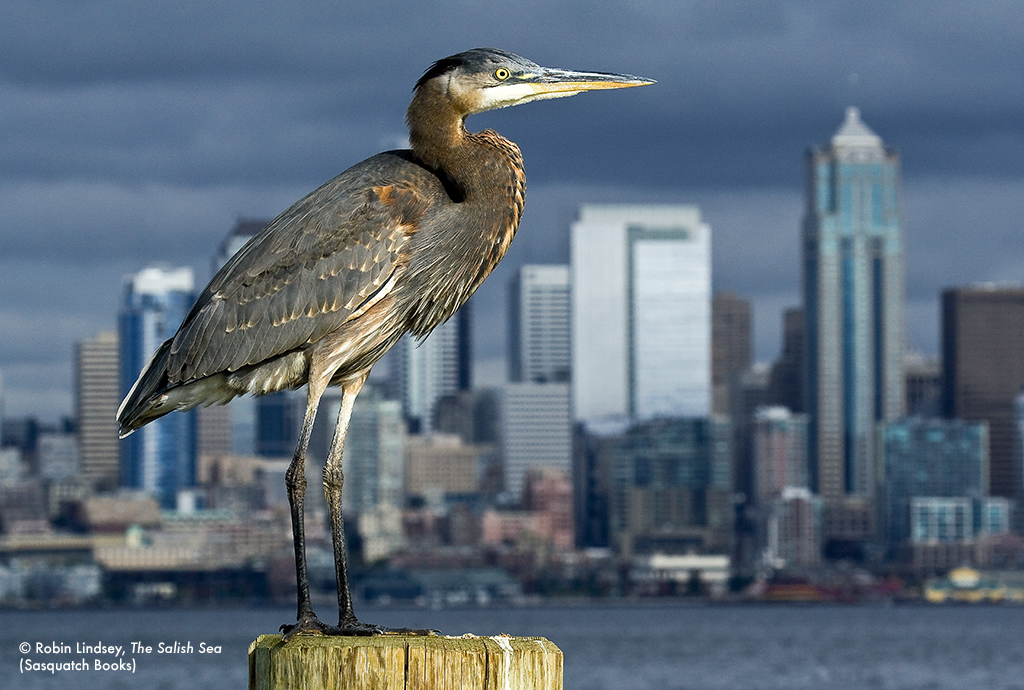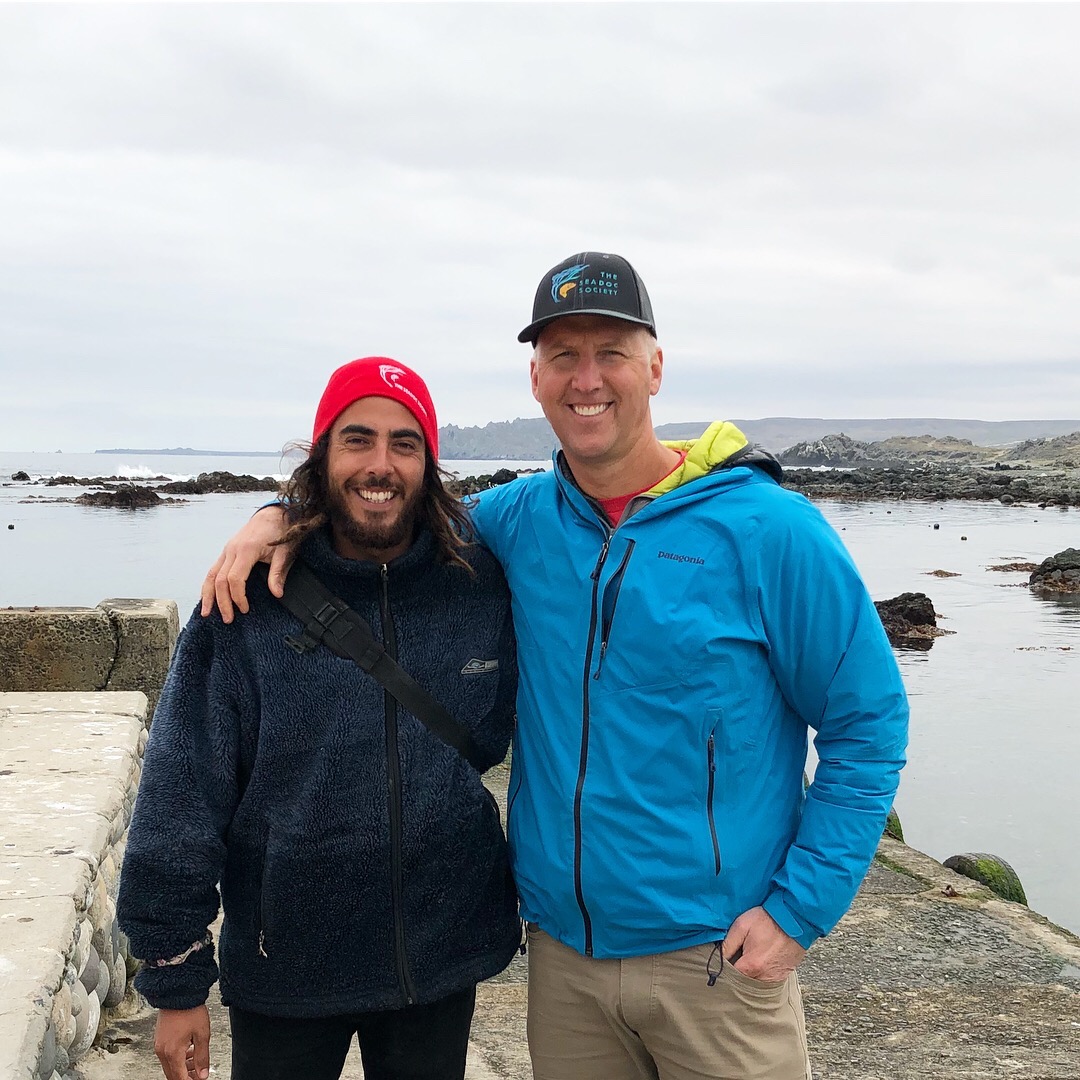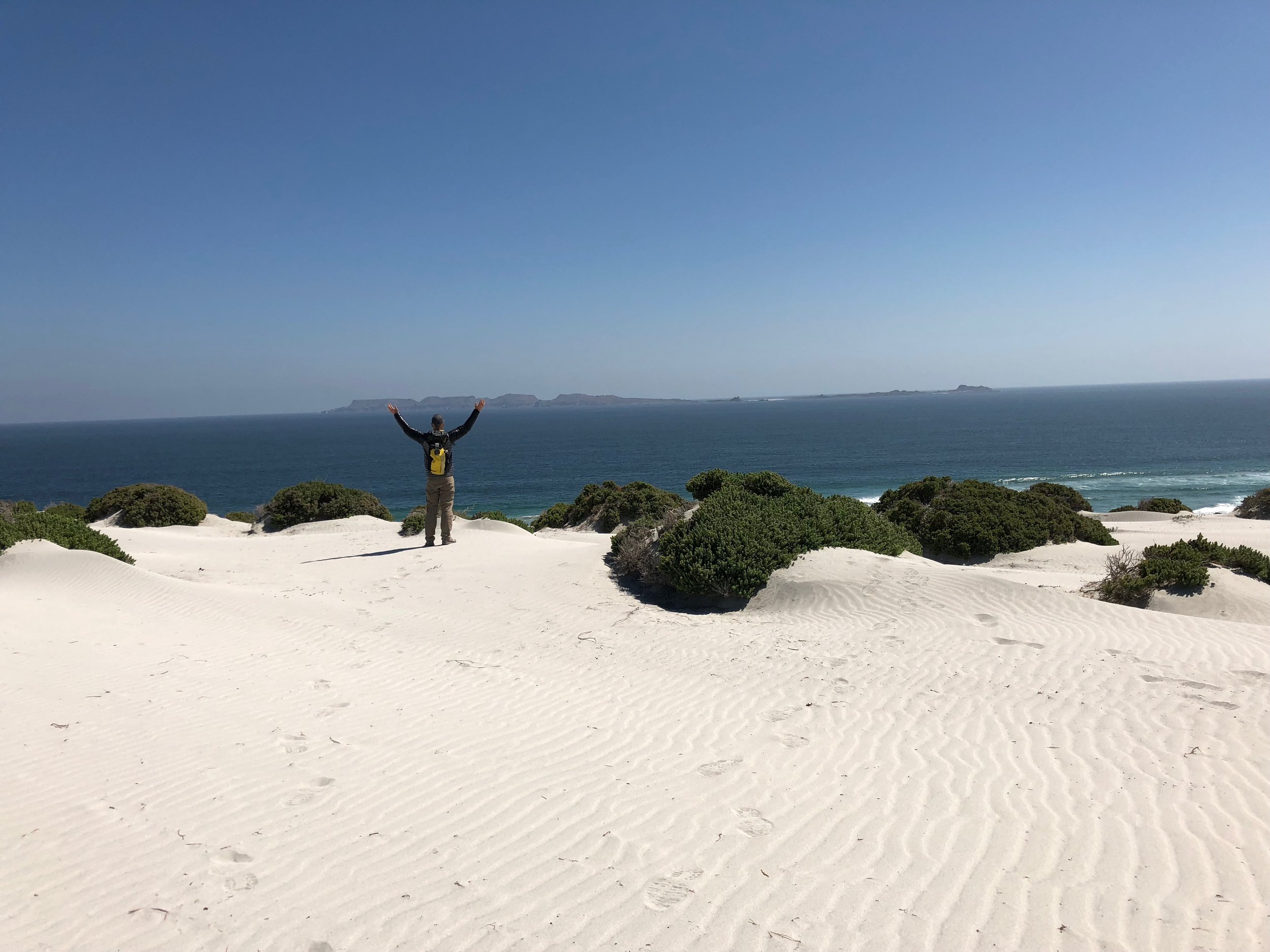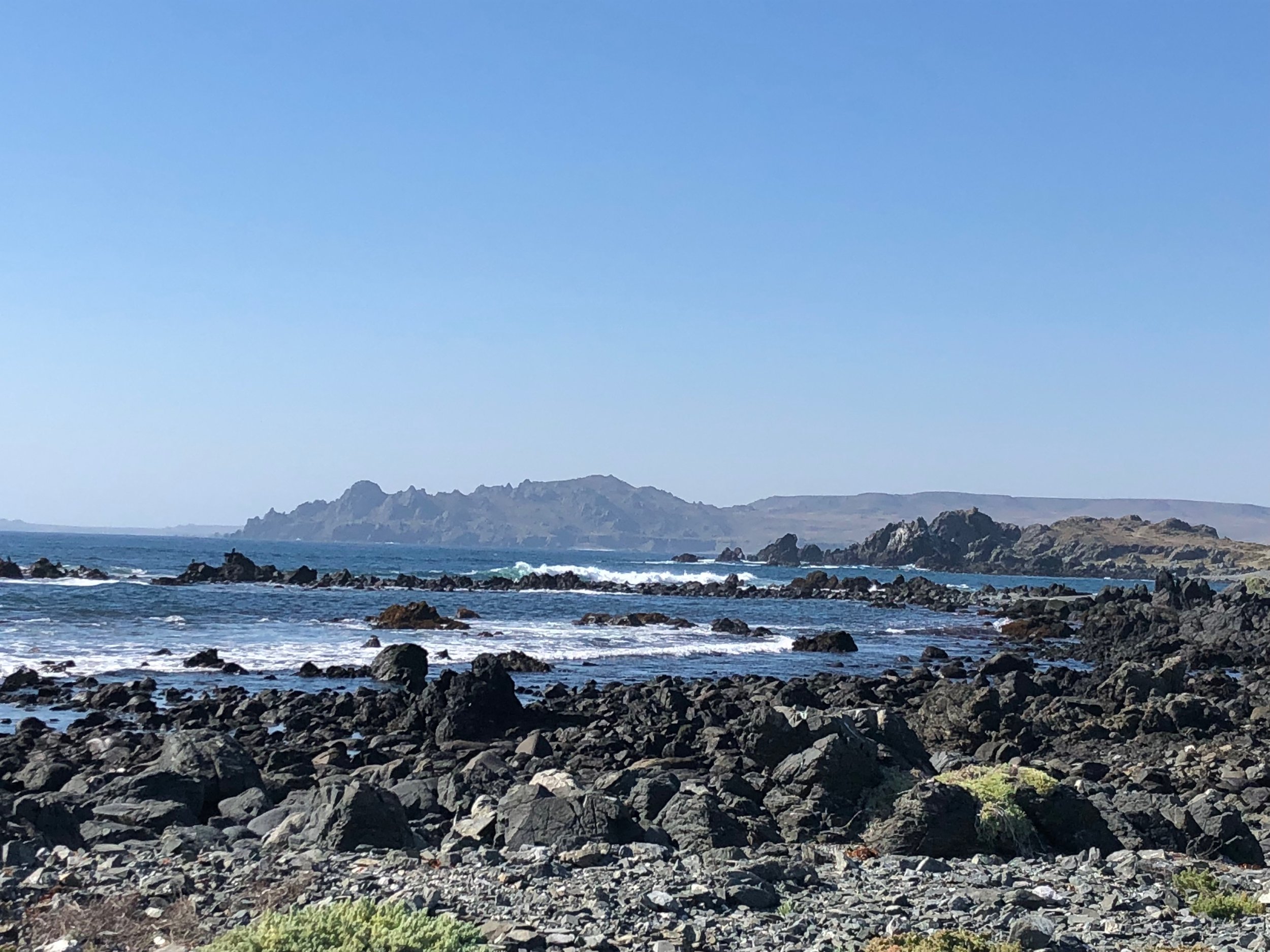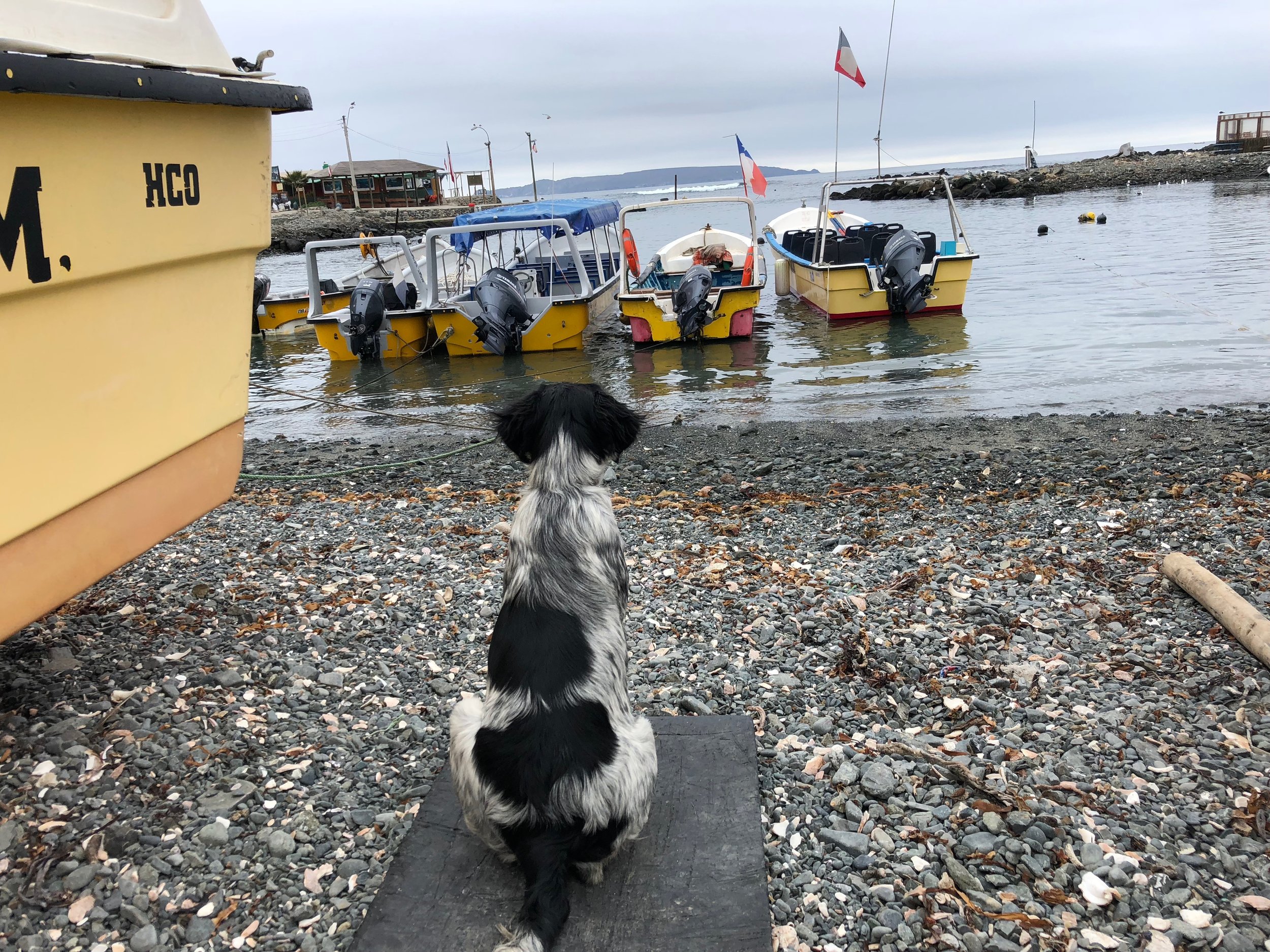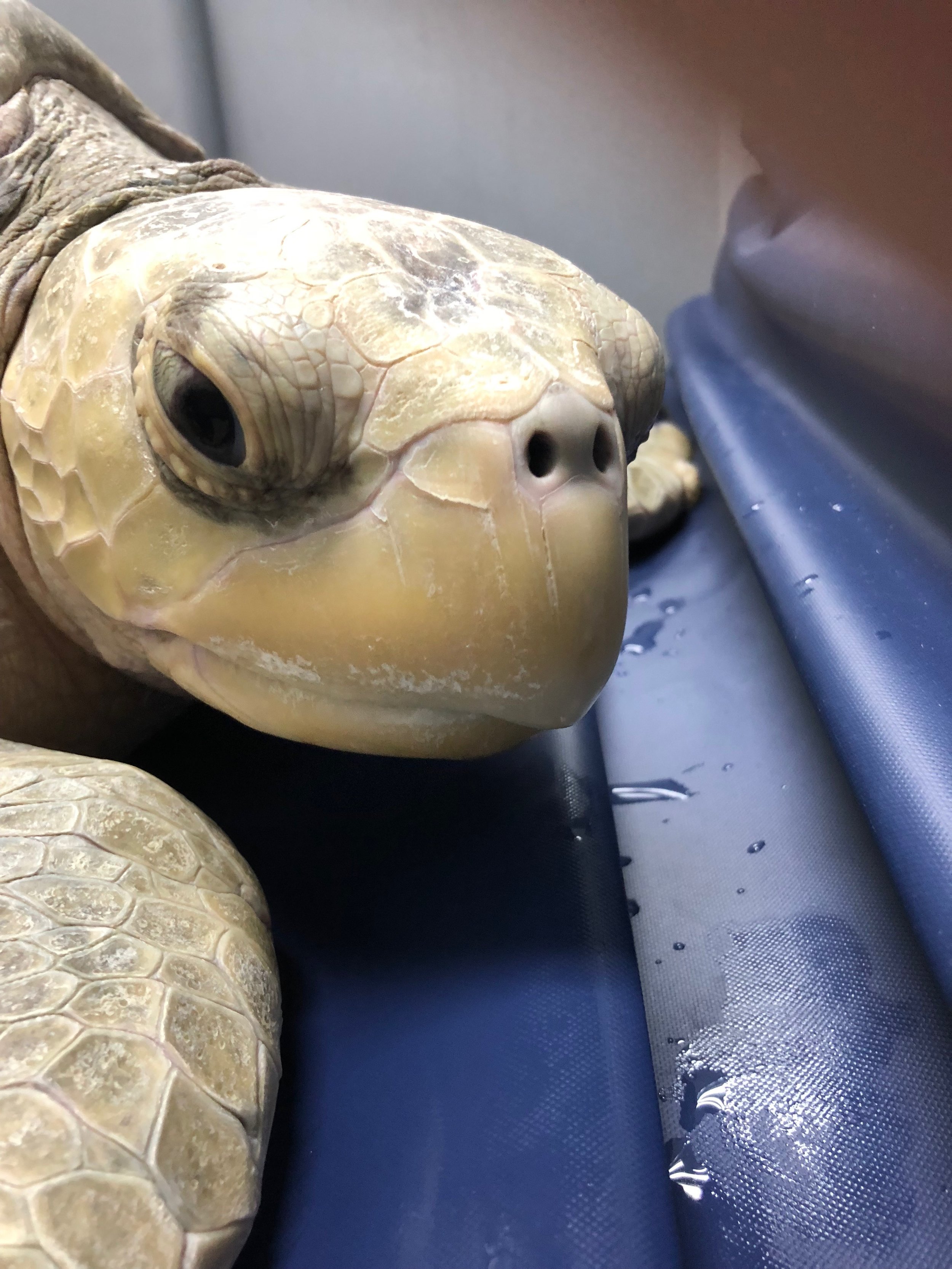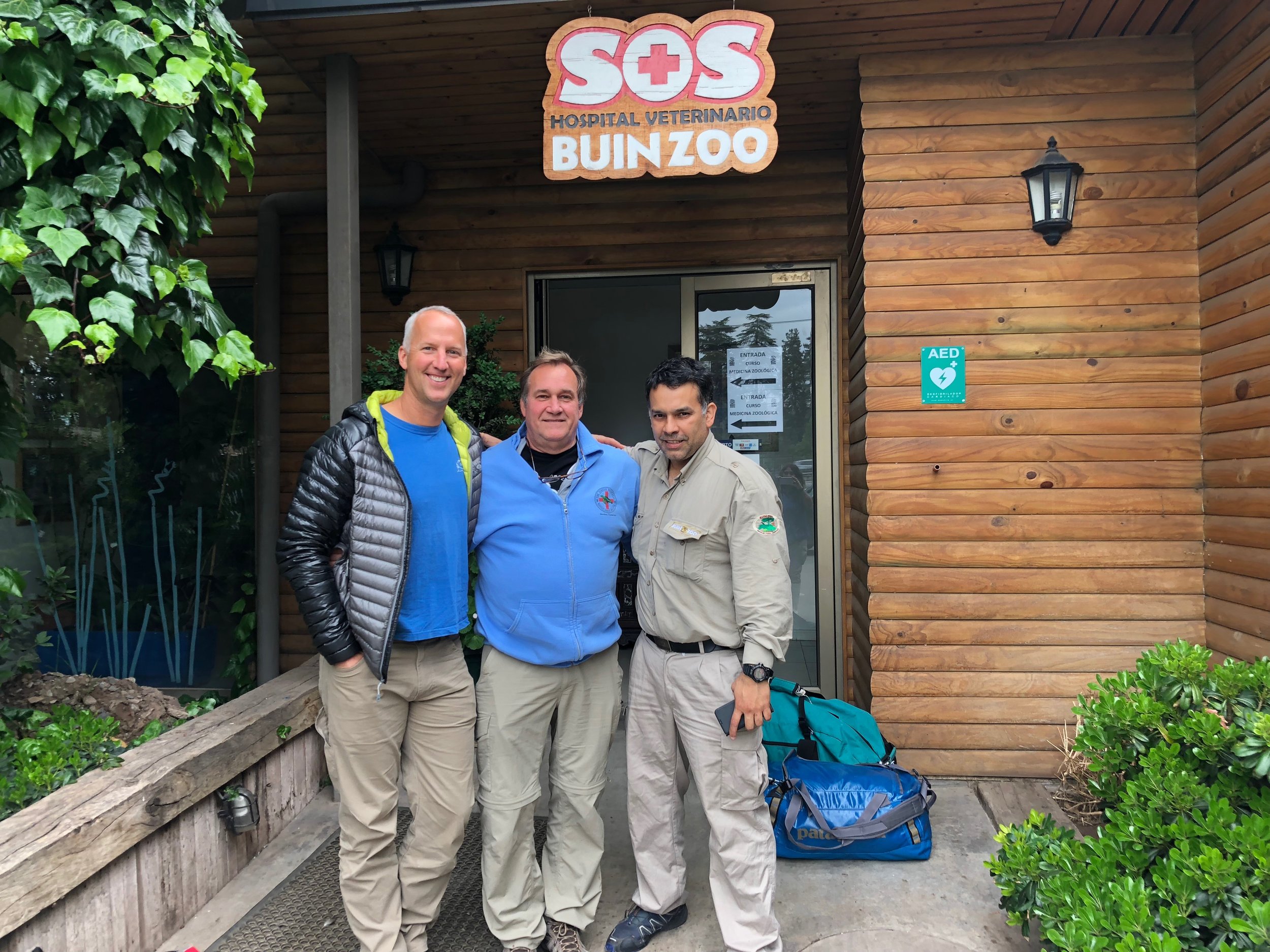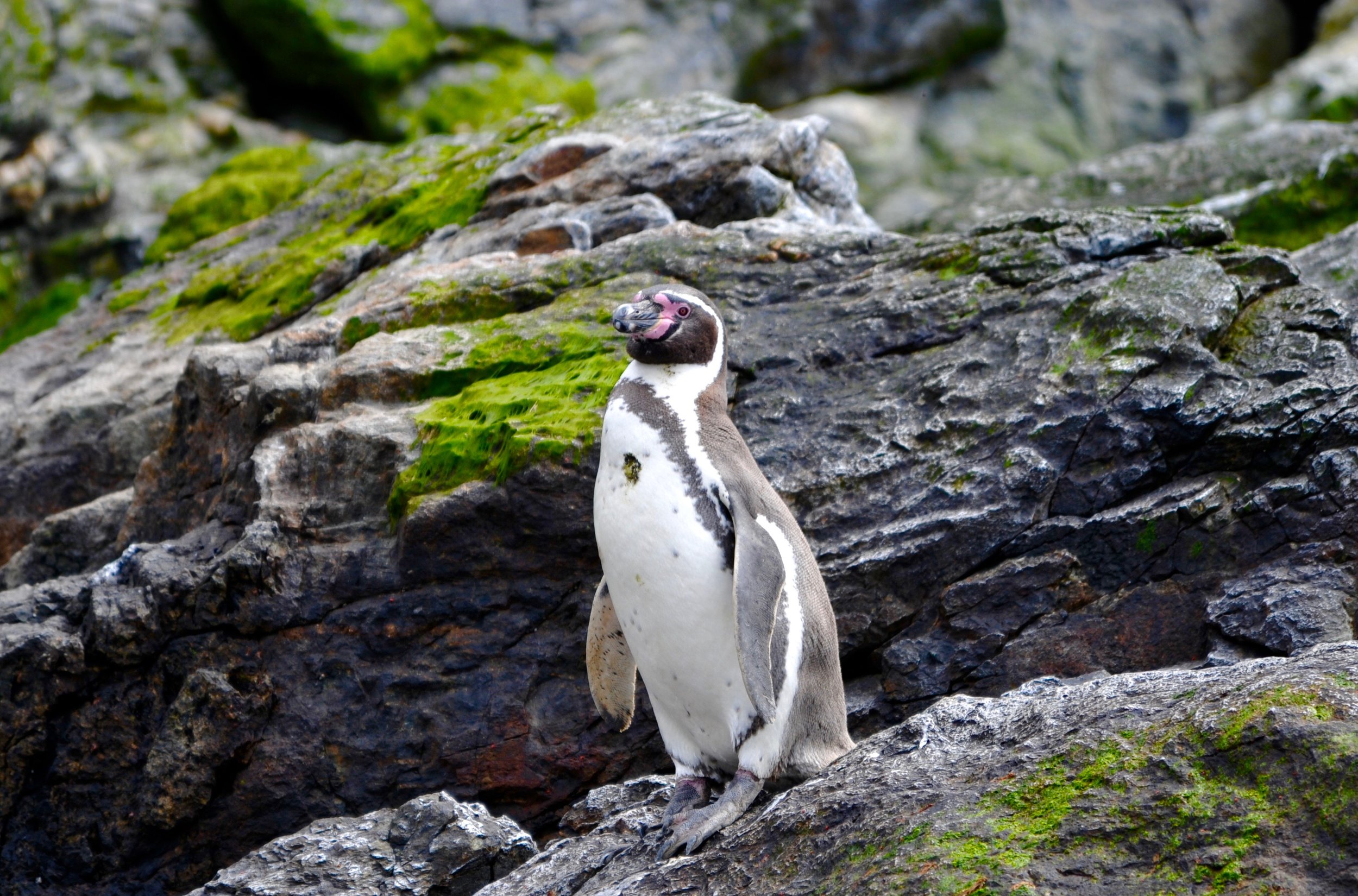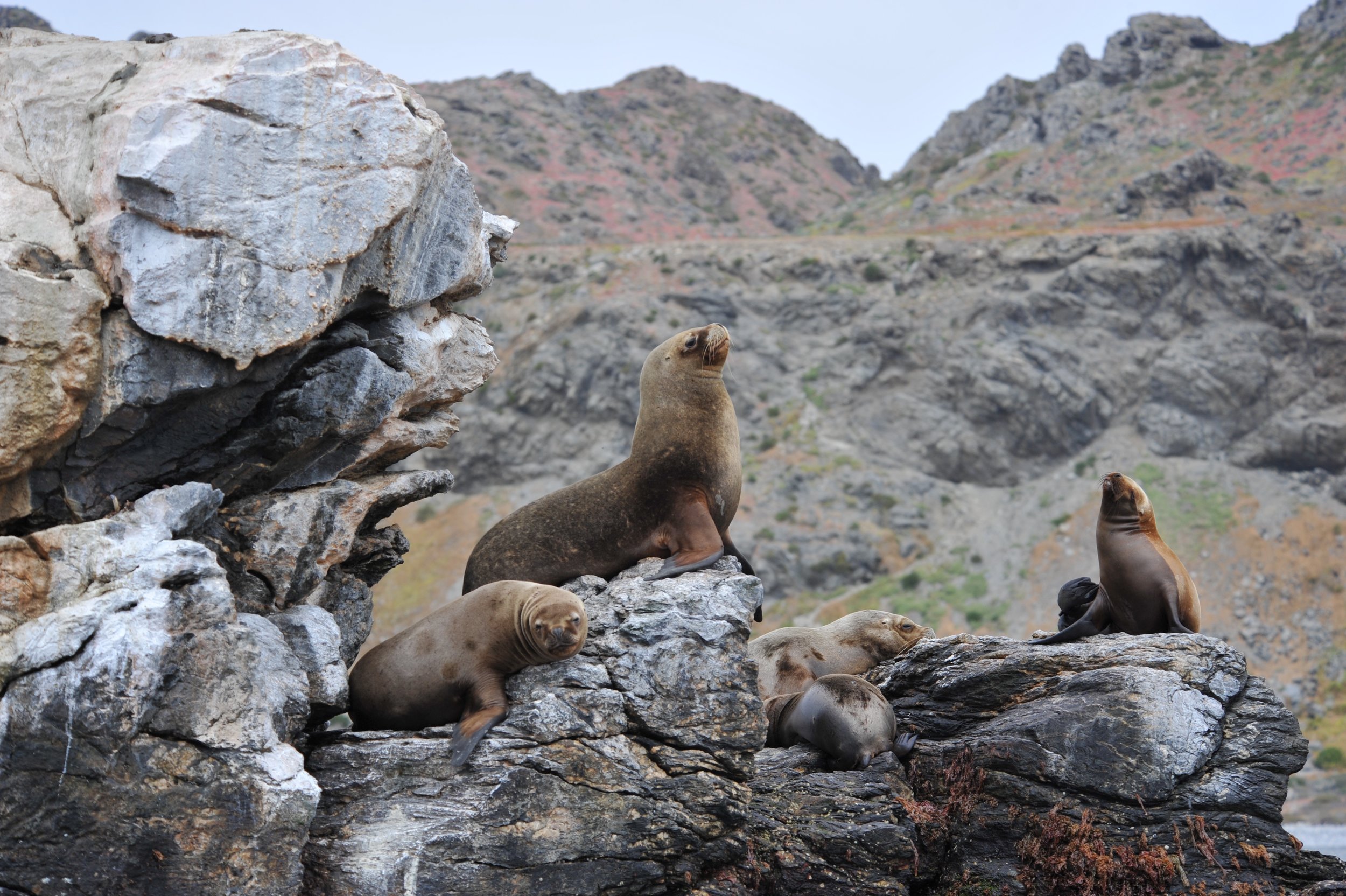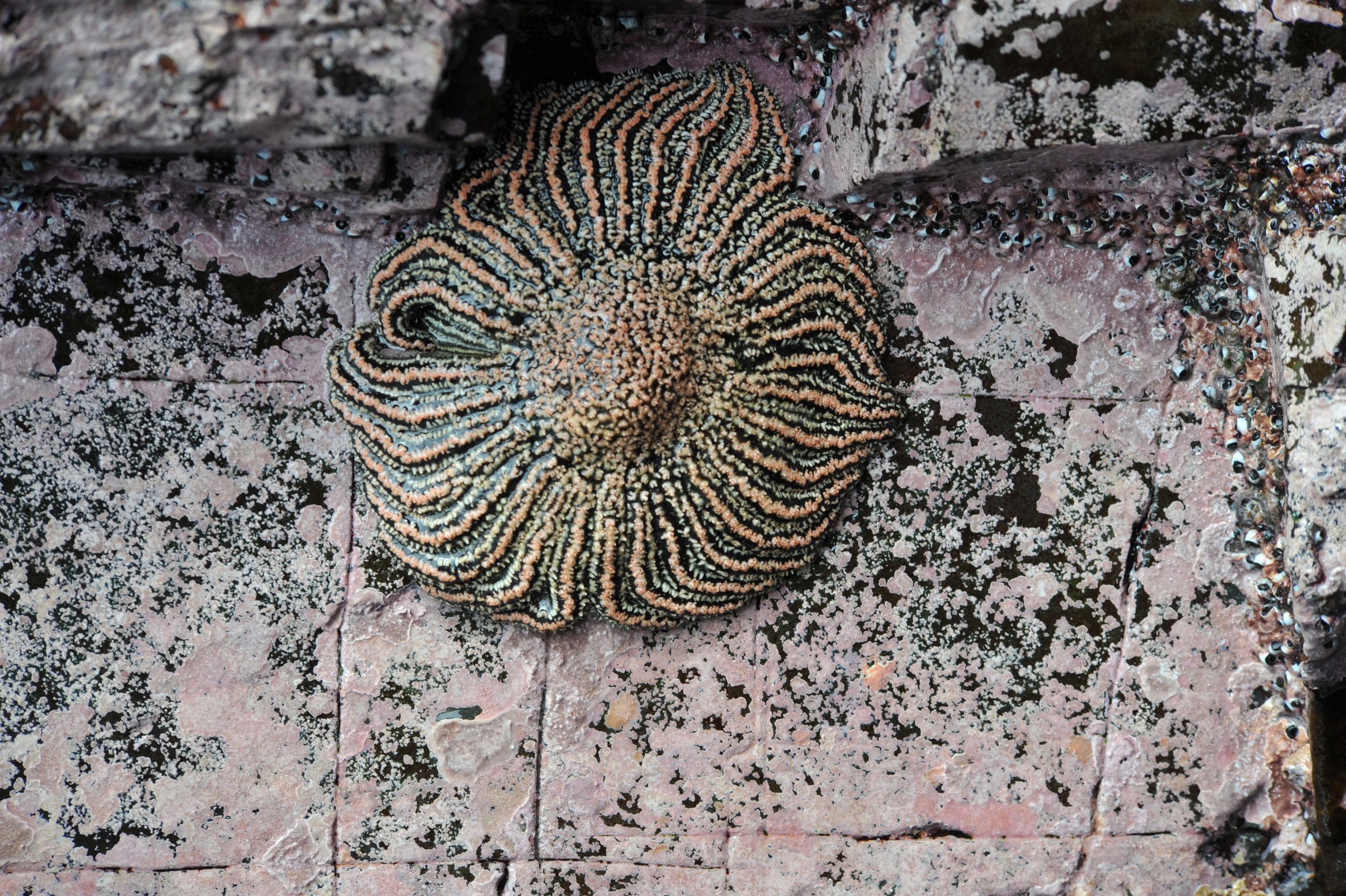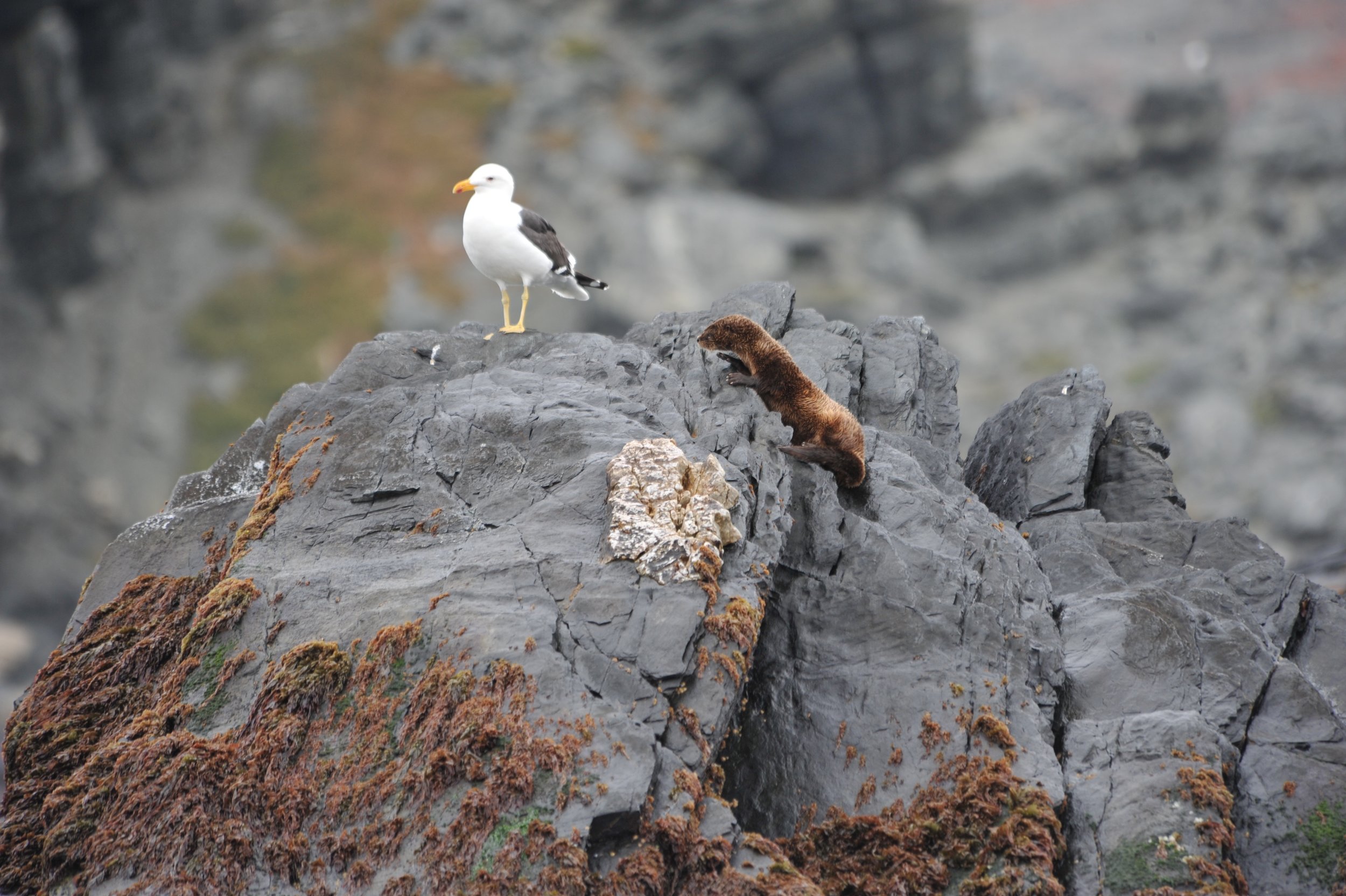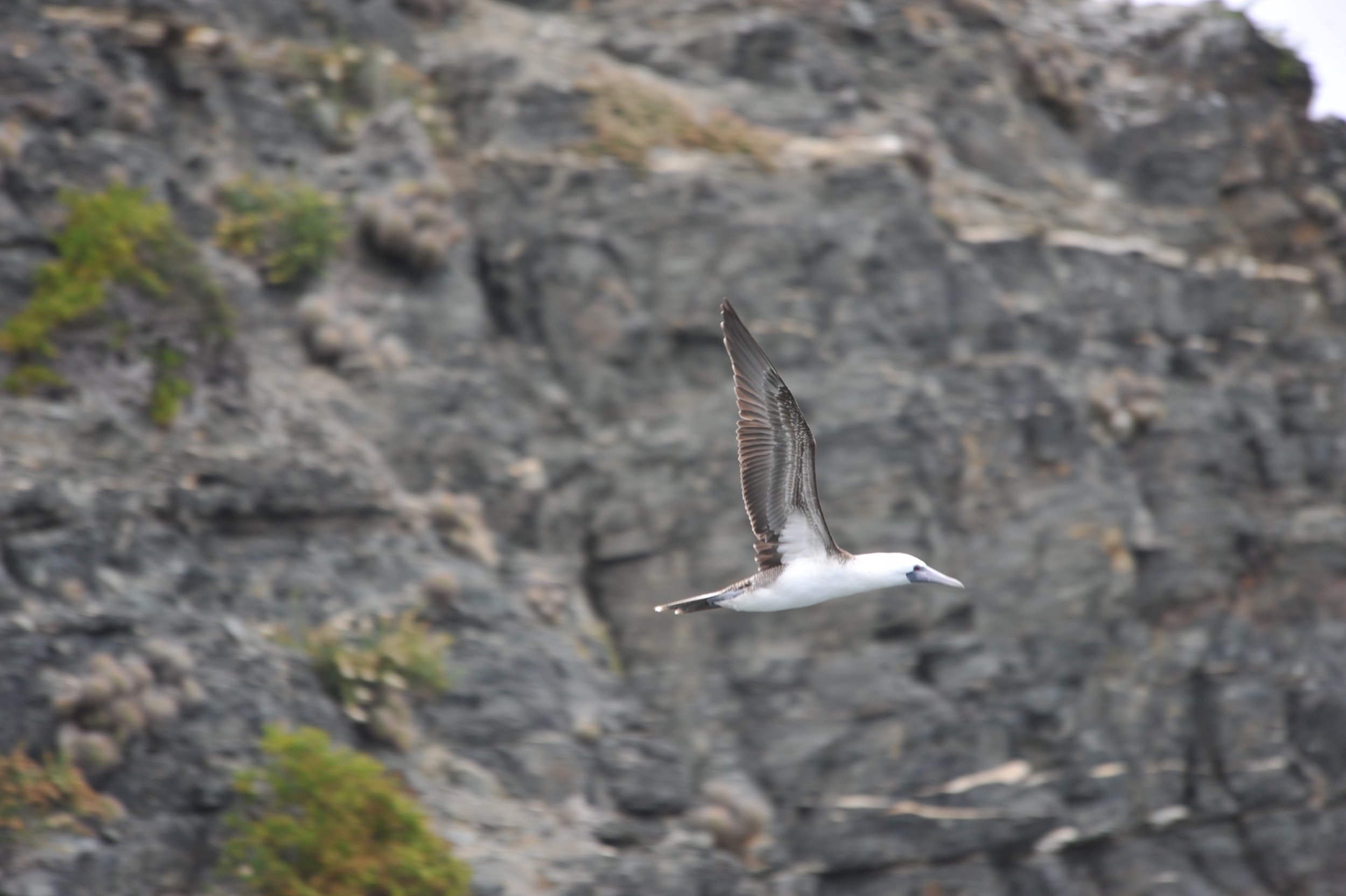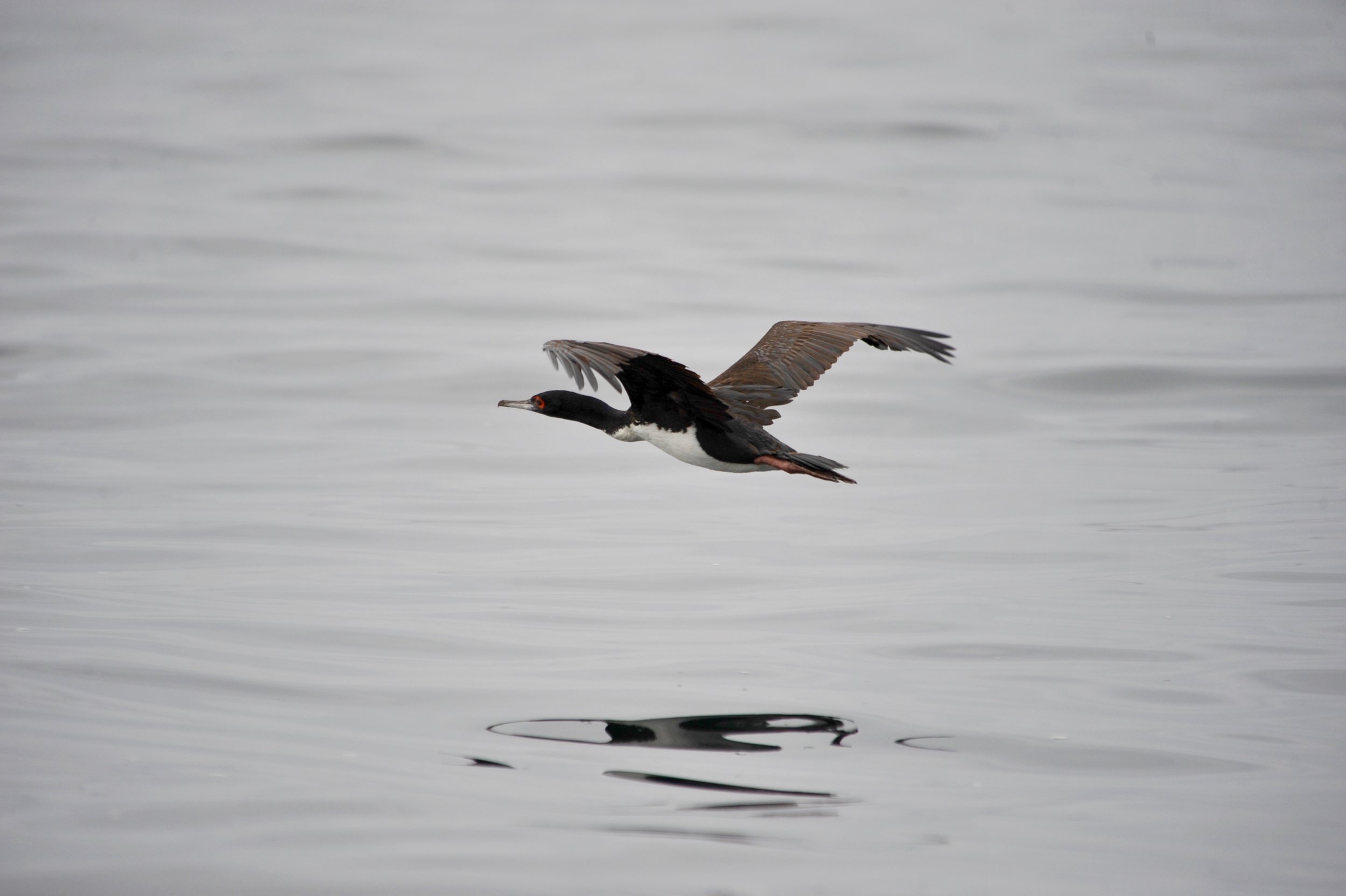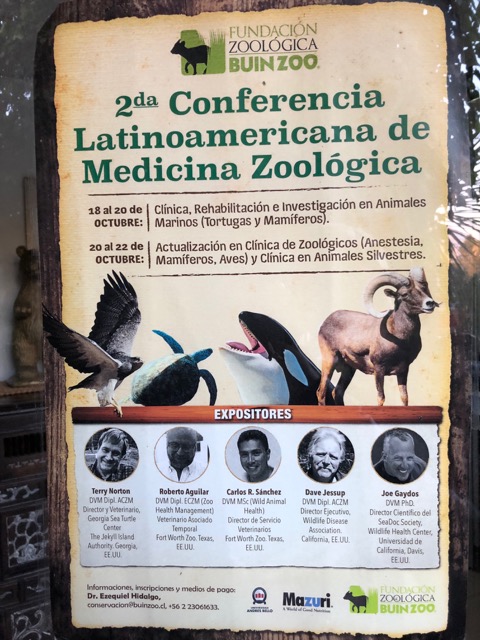SeaDoc Society Science Director Joe Gaydos received the Local Hero award at the Friday Harbor Film Festival over the weekend for his work with the SeaDoc Society and his involvement in the San Juan Islands community. He took a moment to thank the local supporters who have made SeaDoc’s work possible. For those who weren’t able to attend, we offer Joe’s thanks in this post.
Salish Sea Wild: The Scoop on Southern Resident Killer Whales
In this episode, Team SeaDoc works with scientists trying to save the Salish Sea’s most iconic and endangered species: the Southern Resident killer whale. The goal is to collect critical health and diet data from each of the 73 surviving animals. So how does a wildlife veterinarian make a house call to do non-invasive medical tests on 10-ton killer whales in the open sea? It takes sharp eyes and a fine mesh net.
Joe Gaydos to be Honored as Local Hero
Our Science Director, Joe Gaydos, will be honored with the Local Hero Award at the Friday Harbor Film Festival on San Juan Island this fall! The award will be presented at 7pm on October 27th, the final night of the festival. If you’re interested in attending the event, which takes place at the Whittier Theatre at the San Juan Community Theatre, check out their website for ticket information.
Ocean Outbreak: Confronting the Rising Tide of Marine Disease (Book Review)
Ask any ocean lover to name the biggest threats to ocean conservation and you’ll get a list so long it will make you uncomfortable: derelict fishing gear, increasing underwater noise, invasive species, ocean acidification, overharvest, plastics, toxins, warming water, and so on.
What you probably won’t hear is the word disease—not because the agents of disease are microscopic and out of sight, but because we know so little about how they affect the marine environment. Most people have never thought of parasites and pathogens as agents of change or important ocean stressors.
Knowing, Connecting, and Protecting the Salish Sea (Joe Gaydos at Huxley College of the Environment)
Our Science Director Joe Gaydos spoke Western Washington early this year as part of their Huxley Speaker Series. He discussed the importance of having a sense of place when it comes to protecting an ecosystem like the Salish Sea. How can you work to protect something if you don’t first connect with it? Watch the presentation below to hear more. Thanks to Huxley College for hosting us!
How boat noise affects Southern Resident Killer Whales - Joe Gaydos
SeaDoc Society Science Director Joe Gaydos speaks about SB 5577 (Orca whales/vessels) to the Washington Senate Agriculture, Water, Natural Resources & Parks Committee on Feb 12th, 2019. Watch Joe’s statement below:
Want to call your legislator and share your thoughts about Southern Resident Killer Whale recovery? Do it today!
Is Southern Resident Killer Whale Tahlequah (J35) really mourning?
By Joe Gaydos. For more than a week, a female Southern Resident Killer Whale has been carrying her dead calf around the Salish Sea.
J35, the 20-year-old orca also known as Tahlequah, gave birth on July 24th, but the baby girl died just a short time later. Since then, people around the world have watched as this young mother has appeared to grieve.
Primates, including Gelada baboons, Japanese macaques, chimpanzees and mountain gorillas have been shown to carry around dead babies even though, as one researcher commented, it "is a waste of energy and seems to be of no benefit to the mother."
'Return of the Sea Otter:' A Book Review by Joe Gaydos
SeaDoc Society Science Director Joe Gaydos reviews Return of the Sea Otter: the story of the animal that evaded extinction on the Pacific coast, by Todd McLeish.
Whether you are in the camp that defines sea otters as the epitome of cute or in the other camp with abalone, sea cucumber or urchin fisherman who see them as their nemesis, there is no debating that the sea otter plays a key role in shaping healthy nearshore ocean ecosystems. From Alaska to California, these fascinating and complex animals have survived centuries of harvest and persecution. In at least one location, they’ve even been targeted as prey by killer whales.
In his book Return of the Sea Otter, Todd McLeish tells this story. But he also tells the other side of the story; the one of multiple translocation efforts, research and rehabilitation - the story of people committed to making the world a better place, once species at a time.
Beautifully written, entertaining and engaging, McLeish’s tale of the sea otter will make you love this incredible animal and the ocean even more, and will leave you with hope that our intensive efforts to better understand and heal our stressed ocean can and will make a difference.
Buy SeaDoc's Kids Book for a Child in Need
The SeaDoc Society will soon publish a book for young readers titled Explore the Salish Sea: A Nature Guide for Kids. This week we launched an Indiegogo campaign that allows you to buy a copy of the book for a child who might not otherwise be able to afford it.
Our goal is to make the book available to every 5th and 6th grader in the Salish Sea regardless of their ability to pay. (SeaDoc will distribute the purchased books). It’s a great opportunity for SeaDoc supporters to invest in the next generation!
Low-income families are disproportionately affected by environmental degradation. We want to make sure every kid has the opportunity to fall in love with the Salish Sea, because its health depends on the next generation.
Please consider supporting the Indiegogo campaign today and help us spread the word! Visit the Indiegogo page: www.explorethesalishsea.com.
The book, written by SeaDoc Science Director Joe Gaydos and board member Audrey Benedict, is filled with beautiful photos and compelling stories about this unique inland sea. It will be in stores and Amazon on April 17!
In the meantime, let’s gift them to the next generation! Learn more on our Indiegogo page.
Explore the Salish Sea: A Nature Guide for Kids (2018)
Order at your local bookstore or on Amazon.
We want Explore the Salish Sea: A Nature Guide for Kids to be available to every 5th and 6th grader in the Salish Sea regardless of ability to pay. We're piloting that effort by providing the books to students at Camp Orkila on Orcas Island. To buy a book for a student, support SeaDoc on GiveOrcas.
About the book
The SeaDoc Society has published a book for the next generation. Filled with beautiful photography and engaging stories, Explore the Salish Sea: A Nature Guide for Kids inspires children to explore the unique marine ecosystem that encompasses the coastal waters from Seattle's Puget Sound up to the Strait of Juan de Fuca and the Georgia Strait of British Columbia.
Discover the Salish Sea and learn about its vibrant ecosystem in this engaging non-fiction narrative that inspires outdoor exploration. Filled with full-color photography, this book covers wildlife habitats, geodiversity, intertidal and subtidal sea life, and highlights what is unique to this Pacific Northwest ecosystem. The book was written by SeaDoc Science Director Joe Gaydos and board member Audrey Benedict.
Early praise for Explore the Salish Sea
Explore the Salish Sea, a new nature guide for kids, is a lavishly illustrated exploration of the waters that connect Washington and British Columbia. The book encourages kids to get out and explore, and to think about ways to help take care of the Salish Sea every day. More than gee-whiz facts, the book is aligned with Washington state core science-learning standards to step kids through the fundamentals of the ecology of the Salish Sea.
Explore The Salish Sea is a nature guide for kids. It’s about the unique marine ecosystem that connects Puget Sound with Canada. It’s aimed at fifth and sixth graders and based on a previous edition made for adults.
Port Townsend Marine Science Center
“Joe’s new book is beautiful and, while it was primarily designed for fifth graders, it teaches us all that we can -- and must -- make a difference for the health of the Salish Sea and the living things that depend on it,” said Janine Boire, Executive Director. "He is able to connect the science for people in ways that move us to action."
Pacific Northwest Booksellers Association
#2 on the Early and Middle Grade category
#1 in the Children's Environmental & Ecology category
Catch Joe and Audrey at a local book event:
JOSEPH K. GAYDOS is chief scientist for the SeaDoc Society, a marine science and conservation program focused on the Salish Sea. He is a licensed wildlife veterinarian and has a PhD in wildlife health. For over a decade he has been studying the fish and wildlife of the Salish Sea.
AUDREY DELELLA BENEDICT is a biologist, writer, and passionate advocate for the conservation of the global ocean and Arctic and alpine environments the world over. She is founder and director of Cloud Ridge Naturalists, a nonprofit natural history educational organization now in its fourth decade. She is currently a member of the board of the SeaDoc Society and served for nearly a decade as a trustee for the Colorado chapter of The Nature Conservancy, from which she received the prestigious One Conservancy Award in 2003 for her work in Ecuador. Audrey splits her time between her home at 9,000 feet along the Colorado Front Range and her off-grid cottage on San Juan's Frost Island.
The Salish Sea: Jewel of the Pacific Northwest (2015)
Buy the book at your local bookstore or on Amazon.
SeaDoc's first book, The Salish Sea: Jewel of the Pacific Northwest by Audrey DeLella Benedict and Joseph K. Gaydos (Sasquatch Books; $24.95; March 2015), combines a scientist's inquiring mind, dramatic color photographs, and a lively narrative of compelling stories. This is the first book of its kind to describe the Salish Sea, whose name was not even officially recognized until 2008. One of the world’s largest inland seas, the Salish Sea contains 6,535 square miles of sea surface area and 4,642 miles of coastline. Fashioned by the violent volcanism of the Pacific Rim of Fire, plate tectonics, and the sculptural magic wrought by Ice Age glaciers, the Salish Sea is a unique ecosystem home to thousands of different species of mammals, birds, fish, reptiles, and macro-invertebrates=
Amongst breathtaking color photography, The Salish Sea takes a look at the region’s geology, fauna, and history, and ends with hope for the protection of its future. The reader is left with a sense of wonder for this intricate marine ecosystem and the life that it sustains.
SeaDoc's Joe Gaydos Lends Expertise to Veterinarians in South America
SeaDoc is focused on improving the health of marine wildlife in the Salish Sea, but occasionally we’re called up to train experts in other parts of the world. Last month, Wildlife Veterinarian and SeaDoc Science Director Joe Gaydos went to Chile to help train nearly 90 wildlife veterinarians on new advances in conservation medicine.
At a large conference that included lectures and hands-on labs, Joe and Dr. Terry Norton, a sea turtle expert from the Georgia Sea Turtle Center, spent multiple days training an inspiring group of young veterinarians from all over South America. When we asked him about it, Joe said he was, “humbled by the group and their commitment to conservation. They were smart, energetic, and soaked up new information like sponges. They’re leading the charge for marine conservation in South America.”
Joe and Terry spent the long weekend before the workshop exploring the Humboldt Penguin Reserve on Chile’s north coast. “The coast was wild, the views spectacular, and the wildlife amazing, but the islands that make up the Humboldt Penguin Reserve are not without threats. It made me happy to know there are so many dedicated wildlife veterinarians working to save such places.”
While Gaydos was discussing his work with one man in Chile (pictured), he mentioned that he works for an organization called SeaDoc, like Sea Doctors. “He got the biggest smile,” Gaydos said. “ He looked at me and said, ‘oh yes, because our ocean is sick.’ I just loved that! He’s part of the cadre of up and coming ocean advocates that I met down there - very inspiring!”
Check out some photos from the trip:
On An Acre Shy of Eternity: Micro Landscapes at the Edge (Book Review)
By Robert Dash (2017). ISBN: 978-0-578-18871-3
Review by Joe Gaydos Science Director, SeaDoc Society
When Bob Dash asked if we'd review his book, On An Acre Shy of Eternity: Micro Landscapes at the Edge, I admit questioning how a book about one acre of land could be relevant to the Salish Sea and the world's oceans.
I wasn't even through the Preface when I realized that Dash's fascination with edges, or what he calls the places "where alien worlds collide," was akin to my preoccupation with how little separation there really is between the land and sea.
To convey the concept, I often tell stories of salmon, bears, American dippers, and marbled murrelets - animals that defy the land and sea segregation. Dash, the artist with a camera and poet with a pen, does it ever more subtly and more convincingly. By the time you've admired and re-admired his photographs and read and re-read his poems, you see how interconnected this one acre is and you're left wondering how you could have ever doubted that the land and sea are inseparable.
At first glance, you will be inspired and wonder where in the Salish Sea you can find Dash's magical little acre of land and how you can arrange a visit to take it in first hand. After enjoying beautiful photographs of birds and scanning electron microscope images of their feathers or thinking about "this land as an essay" while reading free verse poetry juxtaposed to striking photography, you will realize that a visit to Dash's acre is not really what you need.
Instead what you need to do is open your eyes and see that we are all living on our own "acre shy of eternity," we just didn't know it. Dash opens our eyes so subtly and so convincingly that you, like me, may walk away from reading his book thinking you already knew what you really just learned. On An Acre Shy of Eternity will intensify not only your view of the world, but your love for it as well.
'A Sea of Glass' Shrinks the Gap Between Art and Science (Book Review)
Book review by Joe Gaydos, SeaDoc Society
A Sea of Glass: Searching for the Blaschkas' Fragile Legacy in an Ocean at Risk
By Drew Harvell
University of California Press, Oakland, California
2016
With highly cited publications in Science, Nature, Proceedings of the National Academy of Sciences, and every other prestigious scientific journal you can imagine, Cornell University Professor Drew Harvell is a scientist. And honestly, scientists are not known for being art aficionados. But when Drew was appointed to curate a stunning collection of glass invertebrates purchased by Cornell in the late 1800s as a teaching tool, she had the wisdom to recognize beauty and the power it has to change us for the better. These 569 glass animal pieces were made by the famed European glass artists Leopold and Rudolf Blaschka and purchased with the help of Cornell's first President to teach land-locked students about the ocean's incredible biodiversity. Dusty, long forgotten, and often broken, these artistic pieces were still so beautiful and so true to life they compelled Harvell to undertake a worldwide quest to find their living counterparts. Like the fate of the actual glass collection since its creation 160 years ago, the world's oceans too had been neglected, not well cared for, and in more places than we care to admit, broken.
A Sea of Glass is Harvell's personal story. One where the joy of experiencing the perfection of Blaschkas' glass counterfeits actually shrinks the fabricated gap between art and science. It also takes a hard look at how the oceans have changed since the Blaschkas' created their first piece ... a time when the oceans' were unexploited, healthy, and teaming with exciting creatures, most of which had yet to be discovered or described. The fragility of our oceans and what we have done to them is well detailed in Harvell's imaginary discussion with Leopold Blaschka where she shares her passion for the artistry of the ocean's vast invertebrates and also explains to him how we have squandered the ocean's riches in our quest for improved life and material goods. After a heartfelt monologue that includes the toll that ocean acidification is already taking on so many shell-forming invertebrates, Harvell herself recognizes that the depressing story she portrays sounds more like science fiction than fact.
Just as Harvell was able to recognize the value of and restore the Blaschkas' neglected art, she too reminds us that there is so much we can do to revive our fragile oceans. In the end, Harvell's well-written story makes the reader want to create a future that generations look back on as we do the work of the Blashkas - with pride for having created something lasting and inspirational that makes the world a better place. After all, shouldn't that be the goal of both art and science?
Coming next: Gaydos reviews Robert Dash's new book, On an Acre Shy of Eternity: Micro Landscapes at the Edge
SeaDoc is growing!
The view from the SeaDoc office.
That's right! Over the last 16 years, SeaDoc has operated like a highly efficient small start-up. Thanks to the support of people like you, we've accomplished a lot, but it seems the need for science to help heal the Salish Sea is outpacing our ability to deliver. It’s time to grow!
We're currently looking for a new full-time Regional Director to work hand-in-hand with Dr. Joe Gaydos, who will soon be able to dedicate himself fully to his important role as our Chief Scientist. The Regional Director will work under the guidance of Kirsten Gilardi and UC Davis to help lead and manage SeaDoc's work to improve the health of marine wildlife and the ecosystem.
We’re seeking an individual with experience running a research institute, non-profit or university unit. He or she should have demonstrated success in leadership and development, a solid understanding of science and the critical role it plays in conservation, and most of all, a passion for oceans, marine ecosystems and the goods and services that oceans provide the world.
"I couldn't be more excited about our growth," said Joe Gaydos, current Regional Director and Chief Scientist. "We need to increase our capacity if we're going to stay ahead of the issues facing the Salish Sea. Splitting my current position into two will allow me to focus on the science and bring in somebody that can help us grow our impact."
Check out the complete position description. Please help us get the word out so we can find the perfect person for this job.
Between Inspiration and the Deep Blue Sea (Podcast)
By Bob Friel
So how did SeaDoc’s chief scientist Joe Gaydos go from studying lions in Zimbabwe to sea lions in the Salish Sea? Joe recently spoke about his fascinating journey with the hosts of True North Story, a popular podcast that features positive, encouraging tales from authors, artists, entrepreneurs, and other notables about finding their life’s purpose.
Much more accustomed to killer whale pods than motivational podcasts, Joe thought the interview was just going to be about his bestselling book, Salish Sea: Jewel of the Pacific Northwest. Instead, he found himself pressed with personal questions about how a West Virginia boy descended from a down-to-earth coal miner winds up living on a Northwest island gazing at sea stars.
Joe gamely answers the questions with his characteristic humor—the story of him as a child, bringing home an unidentified and possibly poisonous snake that got loose and bit his sister is alone worth listening to the interview! But he also gives an inspirational account of discovering his love of science and wildlife, and being encouraged to explore wild places from a very young age, and how that ultimately led to his career as a wildlife vet.
Joe also managed to steer the interview away from himself and the times he recklessly endangered family members to get in a lot of good words about the SeaDoc Society, its history, and the important work it’s doing. By the end of the broadcast, the show’s theme neatly wrapped up the lesson of how Joe Gaydos followed his passions to find his purpose in life with the message of how we’re all connected to the environment, and how vital it is for everyone to explore wild places like our Salish Sea, to get to know them, and to become passionate about protecting them.
You can listen to Joe’s podcast with True North Story online, on iTunes or through the player below.
